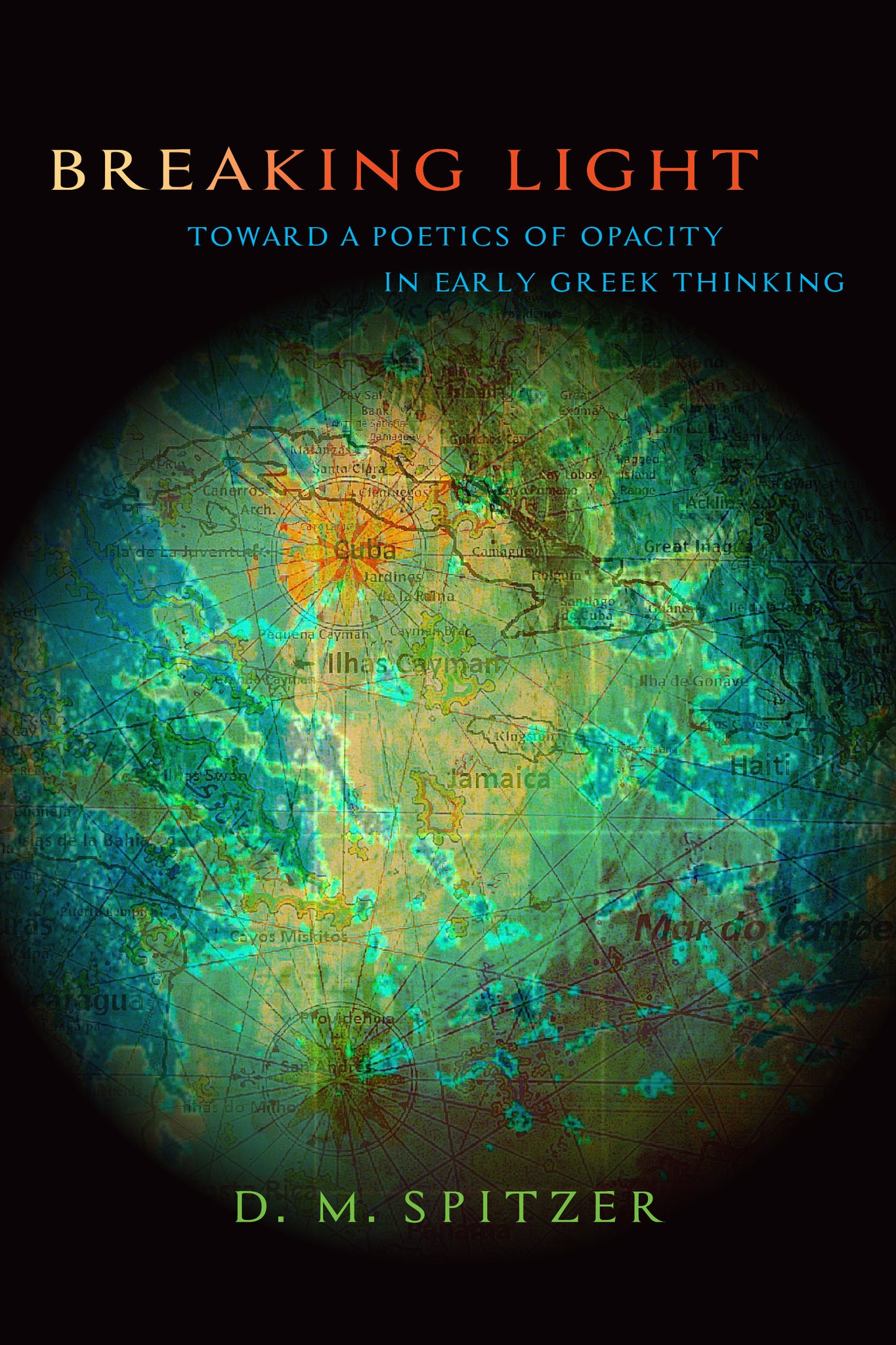We're sorry. An error has occurred
Please cancel or retry.
Breaking Light

Discloses the ways in which opacity and relation in the thought of Thales, Anaximandros, and Anaximenes depart from the predominant understanding of philosophy as clarity.
In Breaking Light D. M. Spitzer discloses the ways in which opacity and relation orient the thought of Thales, Anaximandros, and Anaximenes. In so doing, Breaking Light departs from a predominant understanding of philosophy as constituted by the principle of clarity—a principle already operative in Plato’s and Aristotle’s interpretations of the shadowy figures from the Greek east identified as the first philosophers, the Milesians. Drawing on opacity and relation as articulated by Martinican thinker Édouard Glissant and enhanced by the insights of Martin Heidegger and contemporary feminisms in the (trans-)continental tradition(s), Breaking Light lets the central terms orienting Milesian thinking—ὕδωρ, ἄπειρον, ἀήρ—radiate with the energies of provisionality, uncertainty, and abundance—of opacity. A comparative approach attends to figures like Pherekydes and texts from Egypt and the Near East that are understudied in the continental traditions.


"By demonstrating the unusual 'light' of opacity, the clarity of darkness, and the shimmering of shadows in pre-Socratic philosophy, Spitzer destabilizes the common views on the beginning of the Western philosophical tradition, which mostly rely on the belief that this beginning coincides with the birth of light itself. Breaking Light opens new paths for our reading of ancient Greek philosophy and enables a criticism of the common idea that philosophical thought is committed solely to clarity." — Marcia Sá Cavalcante Schuback, Södertörn University




